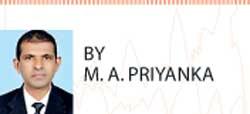02 Apr 2024 - {{hitsCtrl.values.hits}}

 In the discussion of old tax systems, it is an essential to draw attention towards ideas expressed by the various religious leaders, scholars, writers and archaeologists. According to the Aggaghagha Suthra in the Deegha Nikaya , the concept of the tax system initiated with the preachings of the Lord Buddha.
In the discussion of old tax systems, it is an essential to draw attention towards ideas expressed by the various religious leaders, scholars, writers and archaeologists. According to the Aggaghagha Suthra in the Deegha Nikaya , the concept of the tax system initiated with the preachings of the Lord Buddha.
In the Arthashastra published by the Kautilya, as well as in Manusmrutiya, one of the oldest books of Bharatha, it well analyzed the tax systems, tax administration and tax cultures. According to the Manusmrutiya, even though the king likes or dislikes taxes should be collected.
Further, according to Manusmrutiya, taxes should be levied in such a manner that a bee collects nectar from flowers. As Kautelya explained, all government functions depend on Treasury. Therefore, the king should commit to protect the country. Ancient documents such as Badulu Tamlipiya , Mihinthala and Gadaladeniya inscription consist of explanations pertaining to tax systems that existed in Sri Lanka.
Death or Inheritance
This tax is called death tax considering that death means passed away and tax means that have to pay. Initially, this was introduced as death tax and later it was mentioned that the said tax contributed so much to the income process of the king. It was mentioned in the Gadaladeniya inscription in the era of king Wickramabahu in this regard and the villages given by the king (Pravenigam) were exempted from this death tax. In analyzing the taxes in Kadyan era, there was evidence that 1/3 of the properties of the dead person or if there were no male heir, the entire movable property was subject to death tax.
It was indicated that the death tax has been widely practiced during the Portuguese era. During the Portuguese era, a special group of officials called Mayoral comprising of Koralas and Vidanes were formed with the objective of carrying out administration in a formal and strong manner. During this time, the prime functions of Mayoral officials had been to charge the death tax and spread the religion.
Matters related to the death tax are also mentioned in the book Arthashastra written by the Kautilya. As mentioned in that book, after spending on the final rights of a dead person, the remaining amount will be owned by the king. Portion of that amount will be kept for maintenance of the widow and the balance amount belonged to the king.
As mentioned in the janawahara, the Death Tax is similar to burdening somebody (Maralayak). Here, the Portuguese officials had come and stayed there to perform their duties. Their staying and performing of duties at the deceased’s house, was considered a severe headache and inconvenience to the villagers and it was similar to the falling of a log on the head. According to the historical data, in case the dead was a Buddhist, 1/3 of his movable properties and if the remaining portion exceeds 100 pounds, 10 percent of that portion had been taken over by the government and the relevant provisions in this regard had been formulated by these officials.
At present, the concept of death tax is being implemented in many European countries in a different manner. There is a distinct difference between the “Estate Tax” and “ Inheritance Tax”, and it is being illustrated in international law as well. The base of the death tax had been the inherited money or property of the death person.
However, the related private properties have been analyzed as the Estate Tax in the English Law. Since a tax has been charged in the event of death of a person, it is called as a Death Tax. However, in Colombia, this tax is not charged as an Inheritance Tax when transferring the properties, and it is known as Capital Tax.
Imposition of tax on land and properties
King protects the public from enemies. Periyakkulama inscription engraved during King Wasabha, has mentioned that the public was bound to pay taxes on behalf of the king asserting that all the land of the country belonged to the King.
Imposition of taxes on land and property is an old methodology. Even though, amount of tax collected is comparatively low, most countries practice this method even today.
During 1952, a comparatively low tax amount i.e. 1 percent – 7 percent was collected through this method. When calculating the tax amount, the theories of benefit as well as theory of payment ability were also considered. Annual value of a property or rental basis or capitalized value of the property or actual value of the property had been the prime base for taxation of property. In 1960 and 1962, tax was imposed on lands considering it as an immovable asset.
Prior to the imposition of Income Ordinance No 02 of 1932, Estate Duties were imposed with the objective of strengthening the direct tax. The Ordinance was repealed in 1935 and was reimposed in 1937. This tax was known as an Estate Duty and this had been a tax system which existed for about 50 years, until Act No 53 of 1985 was abrogated.
Prof. Nicholas Calidor who came to Sri Lanka in 1958 had broadly analyzed the Sri Lankan tax system and many qualitative and structural changes were proposed. According to his recommendations, it was proposed to impose taxes such as wealth tax, expense tax and gift tax, and those taxes had been given effect from year 1959, and those taxes were allowed to be abolished with the passing of time. However, as per the agreements entered with the International Monetary Fund, it has been proposed to impose and implement certain other types of taxes.
Wealth Tax
The wealth was firstly introduced during the 1959/60 period. This tax has been introduced in compliance to the new strategies introduced by Prof. Nicholas Kaldor who had visited Sri Lanka to analyze on the Sri Lankan economic process.
It was recommended to impose this tax with suggestions for a comprehensive reform of the direct taxation session paper IV of 1960. And as there is a low tax rate for this tax as well as exemption of taxes had been broad, a much convenient methodology had been created.
The main objectives of imposing of this tax have been strengthening the production process, agri products and using the lands for agriculture purpose completely. Thereafter, distinct legal provisions were formulated in the Act No 4 of 1963 to impose income tax, wealth tax and gift tax. 2 percent had been the maximum amount of tax in the tax policy that existed during the period 1965/66. Accordingly, the Inland Revenue Act No 28 of 1979 was also amended. As per the section 43 of the Inland Revenue Act No 28 of 1979, wealth was described as either movable or immovable property, and a property under section 44 was included to that.
Accordingly, a tax income of Rs. 12 million could be earned during the Year of Assessment 1965/66. Through the imposition of wealth tax, consideration has been given towards the market value of properties. Cash, acquisition of shares in companies, personal vehicles, properties are used in various countries for this purpose. Specially countries such as France, Norway, Switzerland utilize this tax system.
According to the Control Accounts prepared by the Inland Revenue Department, the classification has been made as agricultural property, other immovable property, business property and movable property when charging wealth tax and gift tax. Here, the charging of tax was based on net wealth.
The opinion of the policymakers has been that through imposition of gift tax, property tax, wealth tax, there is focus on minimizing avoidance of tax payment.
There were 19991 persons registered for Wealth tax in the year 1989 and they had paid Rs. 94 million as tax. That amount had been 0.38 percent from the total tax amount collected by the Department during that period. However, this tax had been abolished from Year of Assessment 1992/1993 onwards. Most countries which put in practice the wealth tax have abolished it at present. Steps had been taken by India to abolish this tax in 2015 while France abolished it in 2018. Sweden repealed it in 2007 and Pakistan in 2003 .
Gift Tax
This tax which was introduced in 1959 after 18th July 1958, had been annulled on 13th November 1985. It was introduced to grant lands as gifts.
The section 51 of Chapter XI of the Inland Revenue Act No 28 of 1979 is about imposition of Gift Tax.
According to the function of this tax, a gift tax comes into play in the case of transferring certain movable or immovable property which does not have a financial consideration or cash value to another person voluntarily, and under section 53, transferring of a property which is considered as a gift.
Further, it also states that certain transfers mentioned in section 53 does come under the category of gift.
(The writer is a Senior Commissioner of the Inland Revenue Department. The Inland Revenue Department is marking its 92nd anniversary today)
29 Nov 2024 17 minute ago
29 Nov 2024 42 minute ago
29 Nov 2024 1 hours ago
29 Nov 2024 2 hours ago
29 Nov 2024 4 hours ago